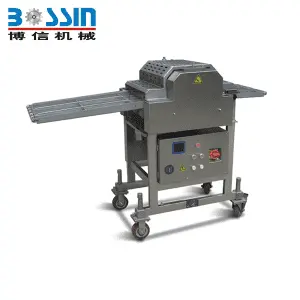
Jul . 25, 2024 05:48 Back to list
The Art of Sausage Making Crafting Delicious Links at Home with Ease and Skill
The Art of Sausage Making A Culinary Tradition
Sausage making is a culinary craft that has flourished for centuries, rooted in traditions that span cultures and continents. From the humble origins of preserving meat to the gourmet creations found in high-end restaurants today, this age-old practice combines skill, knowledge, and artistry. The journey of the sausage maker not only entails an understanding of flavors and textures but also a deep appreciation for the ingredients and techniques that shape this beloved food.
At its core, sausage making is about transformation. Meat cuts, often deemed less desirable, are carefully selected and manipulated through grinding, seasoning, and stuffing into casings. The types of meat used can vary widely, from pork, beef, and poultry to game meats. The choice of meat significantly impacts the flavor profile of the final product. For instance, pork sausage is typically rich and flavorful, while turkey offers a leaner, lighter alternative. The art lies in selecting the right mix that suits both the palate and the intended cuisine.
Seasoning is another critical component in sausage making
. A skilled sausage maker understands that the balance of spices, herbs, and other flavorings is essential for creating a product that tantalizes the taste buds. Common ingredients include garlic, black pepper, paprika, fennel, and various types of pepper. The proportions and combinations can vary greatly, leading to diverse regional specialties, such as the spicy chorizo from Spain, the herbaceous Italian sausage, or the smoky kielbasa from Poland. Each of these reflects the local culture and available ingredients, inviting consumers to explore a world of flavors.The process of stuffing the prepared meat mixture into casings is both an art and a science. Natural casings, made from the intestines of animals, are often preferred for their ability to provide a satisfying snap when bitten. Synthetic casings, while not traditional, are also used for their convenience and consistency. The texture of the finished sausage is influenced by the method of stuffing; too much air can lead to undesirable results, while an overly tight casing can cause the sausage to burst during cooking. Mastering this delicate balance is key to producing a high-quality sausage.
sausage maker

Once the sausages are formed, they can be cooked in various ways—from grilling and frying to smoking and baking. Each method imparts unique flavors and textures, offering further creative avenues for sausage makers to explore. Smoked sausages, for example, acquire a deep, rich flavor that complements their savory filling, while grilled sausages boast a charred crust that enhances their juiciness. The cooking method can also affect the overall mouthfeel and how the sausage interacts with other ingredients when served as part of a dish.
In recent years, the craft of sausage making has experienced a resurgence, fueled by a growing interest in artisanal and locally sourced foods. Many enthusiasts are taking up sausage making as a hobby, experimenting with traditional recipes and creating their own unique blends. Workshops and classes have popped up across the globe, attracting both novice cooks and seasoned chefs alike. As they rediscover ancient techniques and experiment with modern twists, these new sausage makers uphold the rich heritage of this time-honored craft.
Moreover, the trend towards sustainable eating has led many to embrace sausage making as a way to utilize the whole animal and reduce food waste. Each part can serve a purpose in creating delicious sausages, allowing for creativity and resourcefulness in the kitchen.
In conclusion, sausage making is not just a culinary endeavor; it is an expression of culture, innovation, and sustainability. This craft invites a celebration of flavors and a connection to traditions that continue to evolve. For anyone eager to delve into the world of sausage making, the journey is bound to be rewarding—filled with exploration, creativity, and, of course, delicious results.